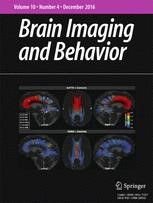Beta-adrenergic antagonism modulates functional connectivity in the default mode network of individuals with and without autism spectrum disorder
April 12, 2017

|
Current research is beginning to suggest that propranolol, a drug originally developed to control blood pressure and heart rate by blocking beta-adrenergic receptors, which is also used for performance anxiety, might be helpful in autism spectrum disorders (ASD). However, the mechanism by which this occurs is not entirely known. Our team examined how propranolol affected interactions between brain regions, or functional connectivity (FC), with functional magnetic resonance imaging (fMRI). We examined this in both those with ASD and in those without ASD. We found that the effect of this drug depended on the network examined. There was decreased FC with propranolol in some networks, but increased FC with propranolol in the network involved with future-oriented decision making. These changes occurred in both those with and those without ASD, and did not appear to be simply due to the heart rate and blood pressure changes, since a peripheral-only acting drug that otherwise had the same mechanism did not have this effect. This may relate to the language and social benefits with propranolol reported in recently published pilot studies.
A paper on these outcomes was published in Brain Imaging and Behavior in October 2016:
https://link.springer.com/article/10.1007/s11682-016-9604-8







